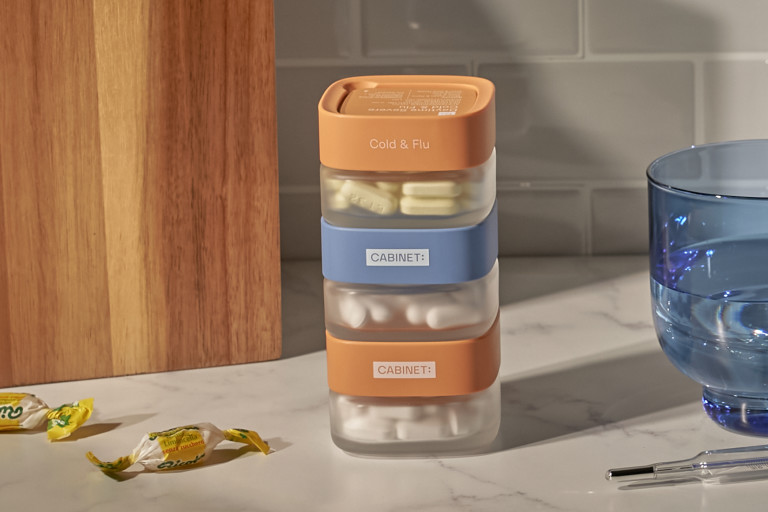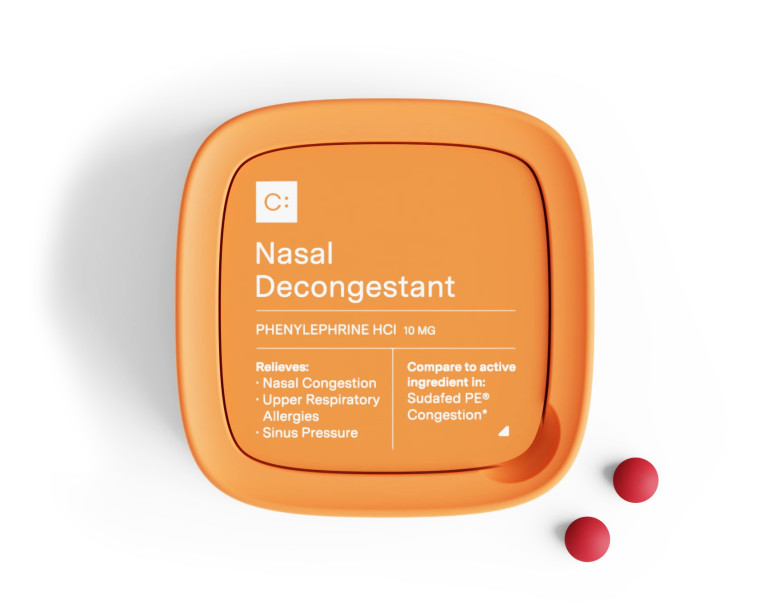Let’s get acquainted—a few congestion terms:
Nasal congestion or “stuffy nose1 ” occurs when blood vessels inside your nose expand and become inflamed, causing swelling of the area.
Rhinorrhea or “runny nose2 ” is when mucus starts to run out of your nose. Runny nose commonly presents with nasal congestion.
Post-nasal drip3 happens when extra mucus travels to the back of your throat. This can cause a tickle in the back of your throat, sore throat, and cough.
What Causes Congestion?
The U.S. National Library of Medicine1 notes several causes for congestion including:
Cold and flu
Sinus infection
Hay fever or other allergies
Over-the-counter (OTC) nasal sprays that were used for over 3 days (rebound congestion)
Nasal polyps4 (soft growths that present on the lining of your nose or sinuses)
Pregnancy
Vasomotor rhinitis (also referred to as nonallergic rhinitis5 , stuffiness occurs as a result of certain triggers such as weather changes, strong odors, air pollution, certain medications, spicy food or alcohol.)
What Are Nasal Decongestants?
Nasal decongestants are medications that are designed to relieve congestion. The active ingredient is often phenylephrine, which is found in Cabinet Nasal Decongestant. This ingredient works by reducing the swelling of blood vessels in the nasal passages and sinuses. Below is a quick introduction to the most popular oral decongestants and decongestant nasal sprays available:

In this post, we will be focusing a bit more on phenylephrine. However, a lot of the recommendations still apply to other nasal decongestant products.
Tips for Using Nasal Decongestants Safely
Overall, nasal decongestants are safe. However, there are a few precautions you should take before taking anything:
1. Identify medication interactions
Even though most decongestants are available over-the-counter, they can still interact with certain types of medications. Phenylephrine, for instance, can interact with quite a few drugs, including:
Bromocriptine7 , which is used in treatment for specific menstrual problems in women, infertility, certain tumors, and Parkinson’s disease
Monoamine oxidase inhibitors (MAOIs), a group of prescription drugs used to treat depression, psychiatric conditions, and Parkinson’s disease
Antidepressants
Ergot-type medications that are used for migraines
Blood pressure medication
Illicit drugs, such as cocaine
Check in with your local pharmacist to see if your medications can be used together with a nasal decongestant.
2. Consider other health issues
Before taking a nasal decongestant, such as Cabinet Nasal Decongestant, talk to your doctor if you’re pregnant or breastfeeding or have the following health issues:
Heart disease
High blood pressure
Thyroid disease
Diabetes
Trouble urinating due to an enlarged prostate gland
3. Take as directed
Taking a nasal decongestant for the first time? It is always recommended to take some time to read the labeling and directions before using any medication. Never take more than the recommended dose of a medication unless your healthcare provider tells you otherwise.
Example: It’s advised to take one tablet of Cabinet Nasal Decongestant every four hours, with a limit of six tablets in a 24-hour period. This medication is not recommended for children under the age of 12.
4. Watch for side effects
Side effects are possible with any medication. If you experience nervousness, dizziness, sleeplessness, or any other concerning side effect, stop taking the nasal decongestant and seek medical attention.
You can always refer to the FAQs portion on the bottom of any product page to find information on potential side effects and warnings of a medicine. You can find in depth information about Cabinet Nasal Decongestant here.
Other Treatments for Nasal Congestion
In addition to an OTC nasal decongestant, there are several at-home remedies you could try to combat sinus congestion and make yourself more comfortable. Here are 4 things you can try:
Sit with a warm washcloth over your face: Consider this a mini spa break for your sinuses. Add a nice glass of cucumber water on the side for optimal relaxation.
Moisten the air: The steam from hot water in a shower can help moisten and open up your sinuses. For safety, it’s recommended1 that you sit in the bathroom while the water runs rather than doing this while physically in a hot shower, where the steam can be too hot to inhale.
Another idea: Run a humidifier. Just make sure you clean it according to the manufacturer’s directions, as mold can grow when humidifiers are not properly maintained.
Sip often: Staying hydrated is key. Hydration works to loosen up mucus and prevent dehydration. Water, fresh juice, clear broth, and warm lemon water with honey8 are excellent options, while beverages like alcohol, coffee, and sodas should be avoided.
Clean out your sinuses: Saline sprays and drops can help wash out mucus and other irritants while moistening your nasal passages. A nasal wash (like a neti pot9 ) can also get the job done, but always use distilled or sterile water to clean your nasal cavity (avoid tap water).









